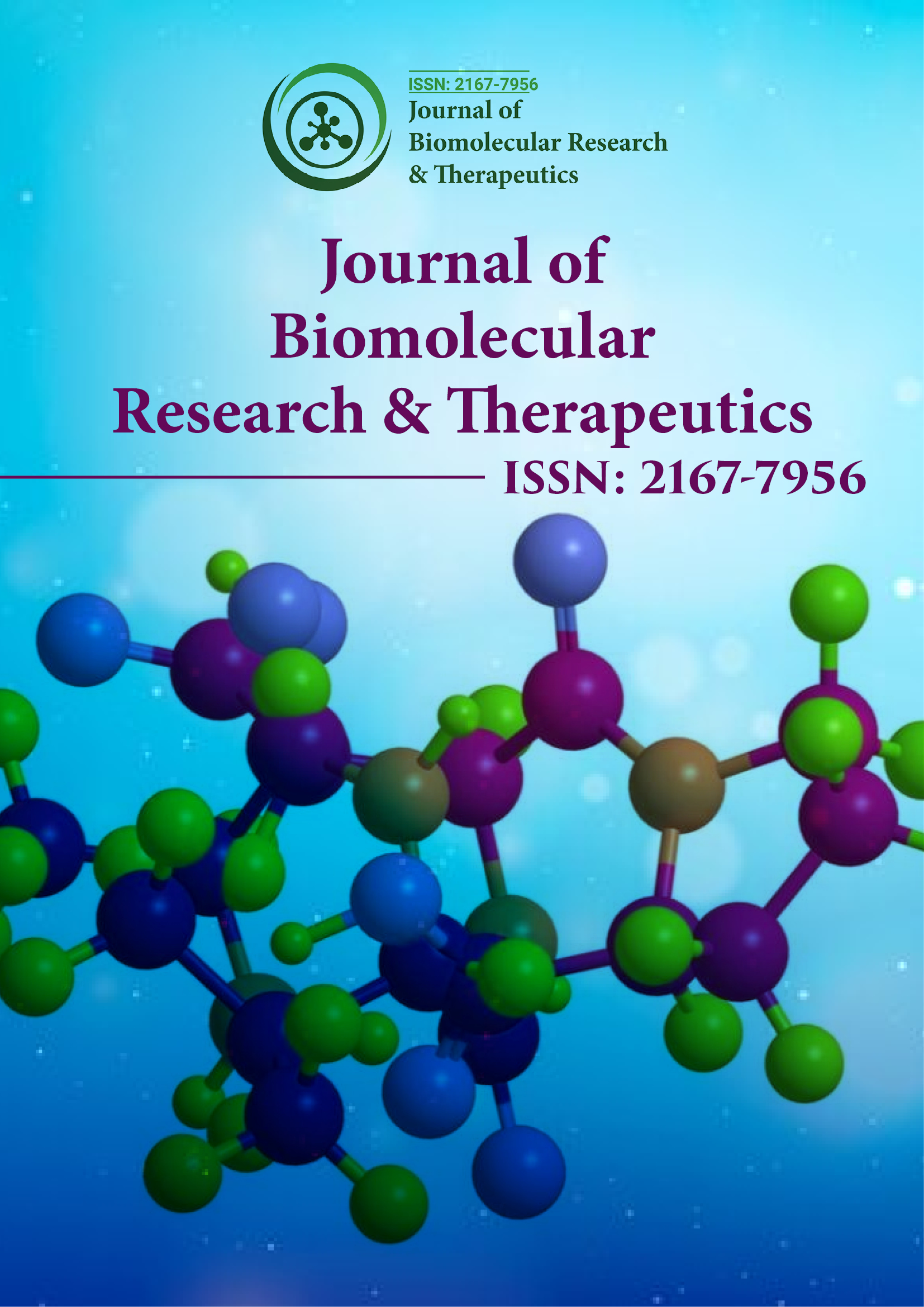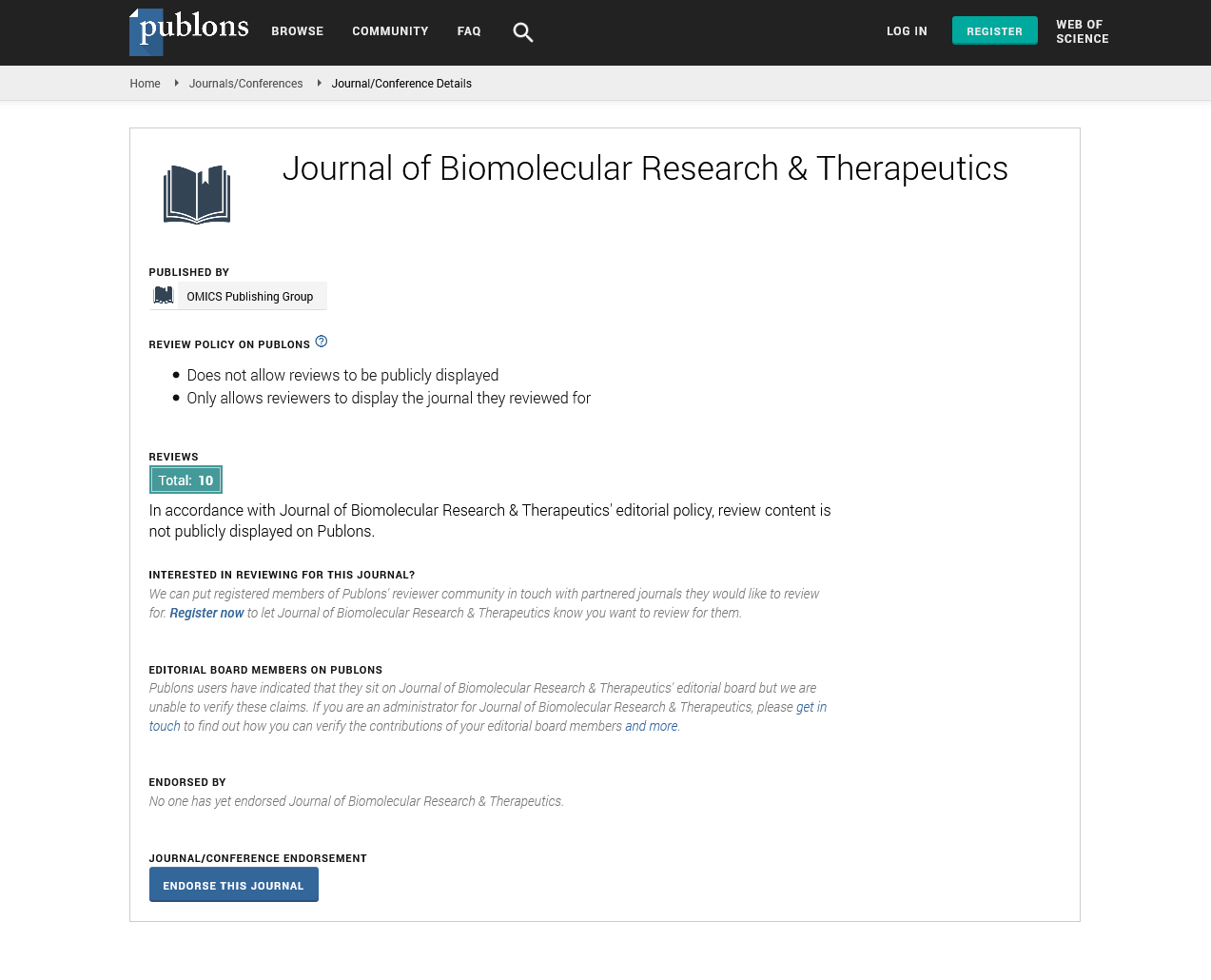PMC/PubMed Indexed Articles
Indexed In
- Open J Gate
- Genamics JournalSeek
- ResearchBible
- Electronic Journals Library
- RefSeek
- Hamdard University
- EBSCO A-Z
- OCLC- WorldCat
- SWB online catalog
- Virtual Library of Biology (vifabio)
- Publons
- Euro Pub
- Google Scholar
Useful Links
Share This Page
Journal Flyer

Open Access Journals
- Agri and Aquaculture
- Biochemistry
- Bioinformatics & Systems Biology
- Business & Management
- Chemistry
- Clinical Sciences
- Engineering
- Food & Nutrition
- General Science
- Genetics & Molecular Biology
- Immunology & Microbiology
- Medical Sciences
- Neuroscience & Psychology
- Nursing & Health Care
- Pharmaceutical Sciences
Opinion Article - (2024) Volume 13, Issue 1
Advancements in Precision Gene Expression Control: Transcription Factor-Based Inducible Systems
Li Tang*Received: 29-Jan-2024, Manuscript No. BOM-24-25390; Editor assigned: 31-Jan-2024, Pre QC No. BOM-24-25390 (PQ); Reviewed: 14-Feb-2024, QC No. BOM-24-25390; Revised: 21-Feb-2024, Manuscript No. BOM-24-25390 (R); Published: 28-Feb-2024, DOI: 10.35248/2167-7956.23.13.366
Description
In the search of molecular biology and genetic engineering, the ability to accurately control gene expression is important. Inducible gene expression systems offer researchers a powerful tool to handle gene activity in a controlled manner, facilitating the study of gene function, protein production, and cellular processes. Among the various array of inducible systems, transcription factor-based platforms have appeared as flexible and customizable tools for regulating gene expression. In this opinion article, we explore the design, cloning, and characterization of transcription factor-based inducible gene expression systems, highlighting their significance in basic research, biotechnology, and therapeutic applications.
Inducible gene expression systems find applications across various fields, including basic research, biotechnology, and medicine. In basic research, these systems enable the study of gene function in a controlled environment, elucidating the role of specific genes in cellular pathways and disease mechanisms. In biotechnology, inducible systems are used for the production of recombinant proteins, biofuels, and pharmaceuticals, offering high levels of protein expression on demand. In medicine, these systems hold potential for gene therapy and regenerative medicine, allowing accurate control over therapeutic gene expression to minimize off-target effects and maximize efficacy.
Transcription factor-based inducible systems control the regulatory properties of transcription factors to control gene expression. These systems typically consist of two main components: A Transcription Factor (TF) and its cognate DNA binding site, known as the response element or promoter.
Designing transcription factor-based inducible systems involves selecting suitable TFs and response elements, optimizing their binding affinity and specificity, and engineering the regulatory regions of target genes. Rational design strategies, such as protein engineering and computational modeling, are employed to adjust the properties of the system and achieve accurate control over gene expression.
Once designed, transcription factor-based inducible systems must be cloned into appropriate expression vectors for functional characterization and implementation. Cloning strategies vary depending on the complexity of the system and the desired experimental application.
For simple systems involving a single TF and response element, standard molecular cloning techniques, such as restriction enzyme digestion and ligation, are sufficient for vector construction. However, for more complex systems requiring multiple components or regulatory elements, modular cloning methods, such as Golden Gate or Gibson assembly, offer advantages in terms of efficiency and flexibility.
In addition to vector construction, cloning strategies may also involve optimization of promoter elements, incorporation of reporter genes for quantification, and validation of inducibility using reporter assays or functional assays in cell-based or animal models.
Characterization of transcription factor-based inducible systems is essential to assess their functionality, specificity, and dynamic range of gene expression. Characterization assays typically involve measuring the activity of the system in response to inducers or stimuli of interest, quantifying the expression levels of target genes, and evaluating the kinetics of gene induction or repression.
In addition to in vitro characterization, transcription factor-based systems may undergo validation in relevant biological models, such as cell lines, organoids, or animal models. Functional assays, including phenotypic analyses and gene expression profiling, provide insights into the impact of gene regulation on cellular behavior, physiology, and disease pathology.
Looking ahead, advances in genome editing technologies, such as CRISPR-Cas9, offer exciting opportunities to engineer transcription factor-based systems with enhanced specificity. Integration of synthetic biology principles, such as modular design and orthogonal components, may further expand the capabilities of these systems and enable the construction of complex genetic circuits with programmable behavior.
Moreover, the development of novel inducers and stimuliresponsive elements holds potential for expanding the repertoire of transcription factor-based systems and enabling spatiotemporal control over gene expression in diverse biological contexts. By controlling the power of transcription factor-based inducible gene expression systems, researchers can open new insights into the principles of gene regulation, engineer complicated biological tools, and advance the outlines of biotechnology and medicine.
In conclusion, transcription factor-based inducible gene expression systems represent adaptable and customizable tools for controlling gene activity with precision and specificity. Through rational design, cloning, and characterization, these systems offer insights into the principles of gene regulation, enable the study of dynamic cellular processes, and hold potential for applications in basic research, biotechnology, and medicine. As advances continue to expand in the field of molecular biology and genetic engineering, transcription factorbased systems stand set to revolutionize our understanding of gene function and enable transformative discoveries in science and technology.
Citation: Tang L (2024) Advancements in Precision Gene Expression Control: Transcription Factor-Based Inducible Systems. J Biol Res Ther. 13:366.
Copyright: © 2024 Tang L. This is an open access article distributed under the terms of the Creative Commons Attribution License, which permits unrestricted use, distribution, and reproduction in any medium, provided the original author and source are credited.

